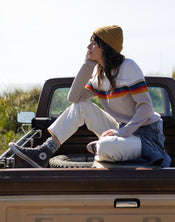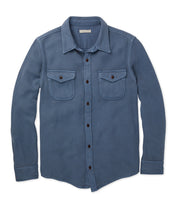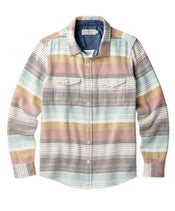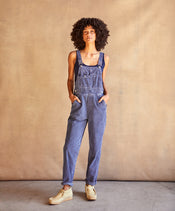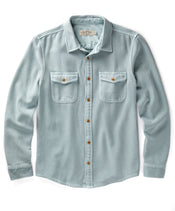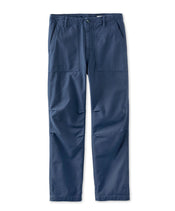Journey

Journey
The Straus Home Ranch
We drove up the coast to Marshall, CA for our fall shoot, drawn by the lush greenery around Tomales Bay and the sustainable farming, from oysters to dairy, that the area is known for. But like every adventure, we stumbled upon something greater that we wanted to share with our community — the story of the Straus family farm and their unwavering commitment to protect the land.
We caught up with Michael and Vivien about their parents' journey to America, growing a dairy from the ground up, building community around sustainability, and raising four kids who carry on the legacy, each in their own way.

For our friends in faraway places, set the Tomales Bay scene for us...
Michael: It's a beautiful, pristine area that looks exactly like it did growing up 50 years ago. Tomales Bay is an amazingly lovely watershed, with Hog Island directly out the window from our farm and the Point Reyes National Seashore directly across the bay from us, where there's tule elk and even a mysterious Stonehenge-type archeological site. Marshall is a very small community — only 50 residents — and we're 3 miles outside of town. This whole area is amazing for hiking, kayaking, birdwatching and, of course, organic and sustainable agriculture. As we're talking, there's a deer walking around my cottage, and there's a bald eagle nesting at the corner of our property. It's remarkably beautiful out here.

How did your European parents end up on a dairy farm in California?
M: Our family's Jewish. Our dad was from Germany, born and raised in Hamburg, and mom was raised in Amsterdam. In 1936, dad was 22 years old, and Hitler's rise to power was clear for anyone who was paying attention at the time. It was a good time to get the hell out of there… Our dad came to California and ended up studying agriculture at UC Berkeley and UC Davis, and shortly after, he stumbled upon this farm, never having milked a cow in his life… After a number of years as a bachelor farmer, our dad was matchmade and flew to New York in 1949 to meet her. They courted for 16 days, but then he had to get back to the farm to milk the cows, so they got engaged and were married three months later.
Mom's family had left the Netherlands just 3 months before the Nazis invaded. She grew up in New York in Queens and was in the first co-ed class of Bard College, and wanted to become a doctor, but she met dad and fell in love with him and the ranch. The reason I'm telling this story is that this farm was really a refuge for my parents. After such a horrific time when their lives had been uprooted, and so many of their relatives killed in the Holocaust, this farm has really been a haven for decades and decades, with their friends and family coming to visit over the years, staying here, working on the farm to find peace and solace. Mom, having essentially lost everything in the War, at one point and basically already fled once, put her foot down and said she wasn't going to run away again. She loved this farm and this area, and was determined to help save it.
Sounds like your parents were pretty progressive at the time?
M: Mom and dad were unique out here in the farming community because they were outsiders. They were Jewish environmentalists, liberals, and Western European city kids. That was very different than the multi-generational, rather conservative farmers in the area. But because our parents were both farmers and environmentalists, they had a unique voice. Mom and dad wanted to protect their land from development and participated in countless environmental organizations and countless campaigns to protect the area, and slowly over time, they made progress.

This was one of the first farms to go organic?
Vivien: My mother read Silent Spring. It really impacted her and at that point, she said, “No more herbicides.” It's not like we were using anything really, but she just said, “That's it. We're not doing this anymore.” That was pretty early on, so when our older brother, who was managing the dairy with our father, had the idea to transition to organic, it was not that heavy of a lift as far as what our practices were, and very aligned with our parents’ environmental ethics — it just went along with what we believed in. There were no precedents, and our ranch was the first organic dairy west of the Mississippi, and we were the only ones that had a creamery that was 100% organic. The dairy and creamery are owned and run separately by our brother at a different location, and here on our ‘home’ ranch, we’re now leasing our land to a local dairy farmer who is also certified organic. We also have a community garden that is certified organic.
The Marin Agricultural Land Trust (MALT) has kept farmers farming and Marin County green. How was your mom involved at the start?
M: Our mom and dad were living here in the '50s and '60s, and it became apparent that California was developing and there was lots of housing going up, and the best agricultural land makes the best place to build houses. But farming's tough. The farmers needed a way to stay on the land, and our mom and her friend Phyllis came up with this unique idea in the late '70s, which was the first agriculturally-focused land trust in the entire country. It provided a mechanism to help farmers stay farming, by compensating them for not selling their land for development. Today, the Marin Agricultural Land Trust (MALT) has protected over 90 ranches, over half the privately-held agricultural land in Marin County and has become a model for dozens of land trusts around the country.

Is there an environmental aspect to MALT?
V: A number of the farms in the land trust are participating in carbon farming, where composting and planting help sequester carbon into the soil. The initial mission was to save the land for productive agriculture. That continues. The goal going forward is to expand and focus on regenerative agriculture and climate change and figure out how MALT can help with these practices, while making sure farmers remain economically viable. MALT offers assistance to farmers for improvements with both expertise and finances. In addition, although there’s no requirement for a MALT farm to be organic, many are.
Now in the hands of the next generation, what goes on at the ranch?
M: Vivien, Miriam, and I own the farm, which we could never imagine selling because we love it, and we had to figure out how to afford to keep it. Vivien was a career actress, I was off at an ashram in India, and Miriam was off living her life in New York. This ranch is a labor of love. We keep trying to figure out how to fix it up, how to restore it, and how to honor our parents and their legacy and their desire to not only protect this farm and the region but to be active members of the community who are supporting local farms. Vivien is on the board of MALT, and also created the Cheese Trail, which is about supporting local artisan cheesemakers. We lease the land to another organic farmer, and his cows grow up to make milk for Cowgirl Creamery as well as his own cheese. And, in 2014, we turned our home into a vacation rental and started hosting weddings, events, wellness and corporate retreats, agricultural education programs, farm tours, and artisan cheese programs.

What brought you all back to the farm?
M: I wanted to get away, but the farm has other plans for me, and so no matter how far I get away from this farm, it keeps calling me back. In truth, I suppose that I need the farm as much as it needs me.
V: I didn’t know what we had when I was growing up. But I do remember my first trip back on a college break thinking, “Oh wow, it’s really beautiful.” That was the first time I saw the landscape with clean eyes. It's my heart, my soul, I love it, it’s everything.
